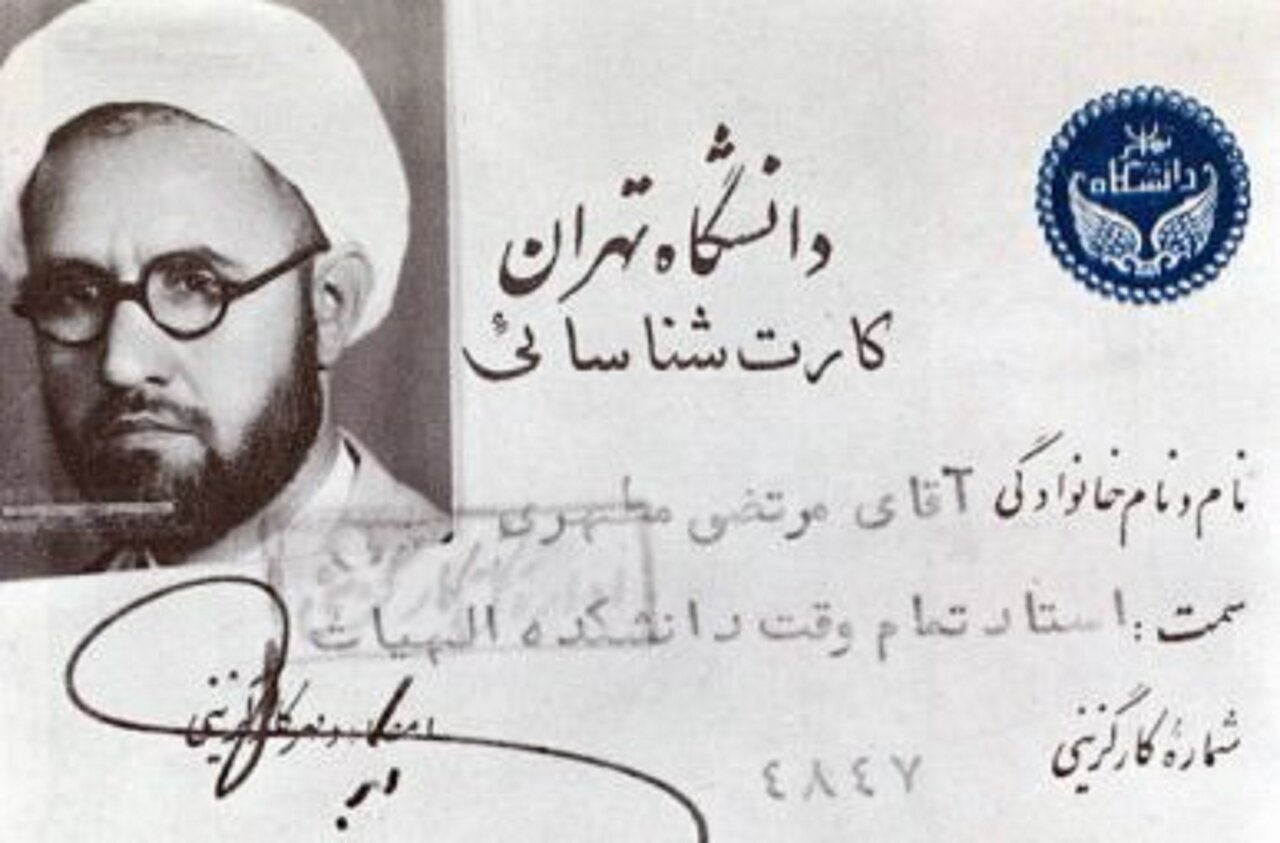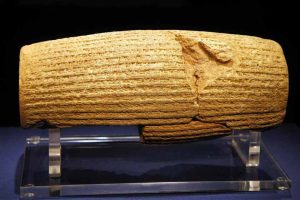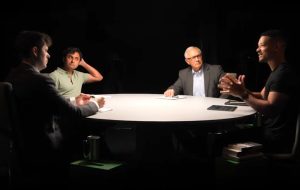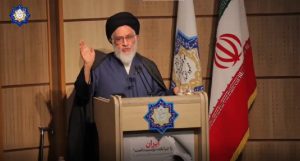Thought Group: Doctor Mohammad Ali Abdullahi Faculty member of the University of Tehran, in a note on the site Our thought Published, he considers the evaluation of the merits and disadvantages of the Qom seminary at the age of 100, entitled “Conference on the Establishment of the Qom Seminary”, and emphasizes that Motahari’s migration was not merely a disadvantage of livelihoods, but rather a social concern. For Abdullahi *Motahhari, he was well aware that the seminary with its current structure and methods was not capable of facing the challenges of the modern world, and that it needs to be present in the modern academic and scientific context for the survival and prosperity of religion in the modern age. For Abdullahi, Motahhari is a successful symbol of the link between the two seemingly opposite Qom and Tehran; By preserving the identity and authenticity of the field, he had an open and dialogue -oriented approach to modern philosophy and science. In his view, this intellectual openness and courage to enter the new arena led Motahari not only to promote his scientific status, but also to find a new audience and convey the message of religion to his time. Unlike traditional conservatism, this religious thought model welcomes the challenges and opens the way for the interaction between science and religion. He emphasizes that today the migration of students to the university is still a challenging issue. But re -reading Motahari’s path shows that true religious thought can only be formed in the context of conscious, scientific and independent confrontation with the new world, and the seminary must take this fact seriously to continue its role. This article reads:
****
The Qom seminary has become one hundred years old. It is natural to look at the past and its future after a century, to reflect on the merits, disadvantages, and hide, inside and outside. Talk about its data and possessions, approaches and methods. One of the children of the seminary is the master of Morteza Motahhari. It has been about half a century since the testimony of Master Motahhari. The world now and here is very different from the world in which Motahari reads, wrote and lived. The seminary and the university need the Mutahari now and here. However, re -reading the scientific and personal life of scholars in Motahari is always useful for new ways.
One of the events of Master Motahhari’s life is his meaningful emigration from Qom to Tehran. This is so important for the seminary to reflect on it. According to the author, the event has implications that can still be informative for the scholars of the seminary. I note a few points about this:
1. Most of those who have been close to Motahari Anas and Fattah say the most important reason for leaving the Qom seminary and going to the University of Tehran was the needs of his personal life.. This is now bringing many students – right or wrong – to university. The reason is perhaps accepted from the individual perspective for Motahari and anyone else, from the perspective of the corporate identity and some kind of room for Wheechra.
The departure of the seminary students to the university is now one of the issues that the seminary is dealing with. The author does not know how the current scholars of the seminary look at this common phenomenon. Whatever their view, it does not diminish the importance of the issue. Hijra from Qom to Tehran, whatever it is, good or bad, the seminary should consider it a matter. Reflect on its benefits and benefits. The traditional part of the seminary on the phenomenon of migration of students from Qom to university is, of course, negative.
He considers the university students to be one of the casualties of the seminary. An issue that is not easy to judge. According to the author, the future of the seminary must inevitably be in the hands of those who have been breathing in the teaching tradition of the seminary, the legacy of the righteous predecessor is properly acquired, protecting it, but trying to rethink, revise, recover. My speech here is different from some of the political project of religious thought from some. However, the phenomenon of going from the seminary to the university is a multifaceted phenomenon. It must be examined from social, psychological, economic and scientific aspects.
Let’s go back to the main issue, namely Hijra Motahari from Qom to Tehran. For a few reasons, I cannot accept that the issue of personal livelihood was the main cause of Motahari’s migration from Qom to Tehran:
A) Motahhari was not an ordinary and anonymous student when he emigrated from Qom to Tehran. He was a scholar and scholar in the Qom seminary. If we do not say that the best student of Ayatollah Boroujerdi, Allameh Tabatabai and Imam Khomeini, at least was one of the best. Those who knew him saw a brighter future than his masters on his forehead. If Motahari wanted to go the same way that his masters had gone and find a position in the field of authority in the field, he would only have to wait a little.
B) As Motahari was rich in the seminary, the Qom -Tehran dual in the eyes of academics and educated seminaries was a mutual and contradictory dual. The university was not only an non -religious institution but an anti -religion. The conversion of seminary schools in the West into a university institution sparked a widespread conflict between science and religion. Undoubtedly, this historical background has been able to raise the suspicion of the seminary. It is clear that the issue is not only about restructuring the external structure of the seminary that may become a university, but the issue goes back to the way the seminary is exposed to the new era. Motahari wanted to understand this new order, which was the result of the development of science. What others were not thinking about, and if they were, they couldn’t do anything.
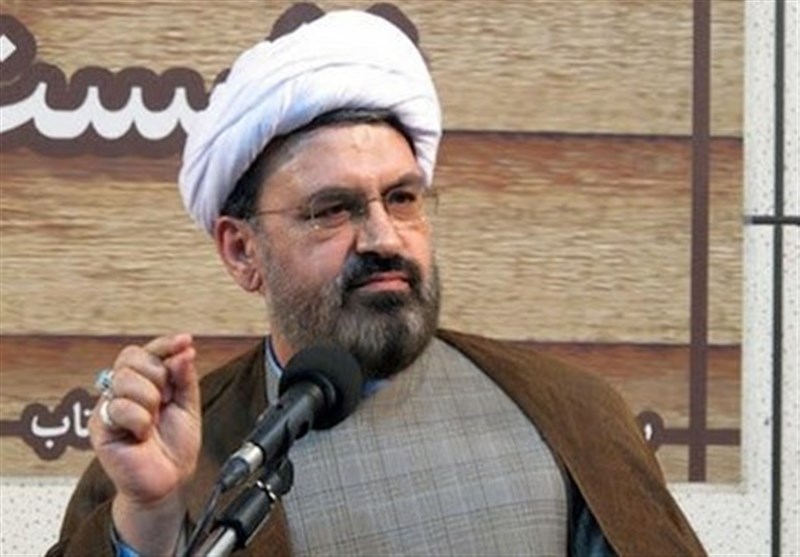
Dr. Mohammad Ali Abdullahi
The traditional part of the seminary had no mental exposure to the new age and the new science. It is natural to oppose any change in the educational system of the seminary. Their perception was, and it is slow that the change of educational structure will lead to a change in approach, and the change in approach and approach would lead to a little change in the foundations of intellectual foundations. Motahhari intended to emigrate from Qom to Tehran in such a situation. He knew what the corporate consequences had for him from Qom to Tehran.
C) Motahari had studied in the teaching tradition of the seminary. Mojtahed, of course, meant that the seminary was in the seminary, but in Motahari, this type of ijtihad was necessary, but it was not sufficient. The scientific and practical conduct of Motahari shows that Ben Ben Dental believed that the seminary should educate the professional Islamist in difficult territories and unpredictable ways. It is neither difficult nor desirable. The favorable seminary of Motahari was in which innovation, read and exposure to the new world would be properly predicted, and that it would not be handled against what the new world gives to human beings.
In such a seminary, he will see a student and the top will be overwhelmed to pave the way for it. A student whose only art is sitting on the broad table of jurisprudence and principles, even if he wrote the margin of the late Sayyid Yazdi and finds a few other aspects for the “Fatima” of the late Khorasani mullahs in the Sufism.
Motahari had properly realized that the seminary did not have such a change in terms of cognitive possibilities and in terms of body and structure. Motahari had to do something. Instead of spending time falling with closed minds, there was another way: went to university.
He had rightly realized that the educated seminaries, sooner or later,, especially on the outer aspect of sermons, pulpits and guidance, could not forever preserve their traditional audiences in the mosque and religious councils. Some university professors also knew that with the formation of the middle class in Iran, the clergy would lose a large part of its audience. The middle class will go to university, cinema, theater and music concerts instead of the mosque and the delegation.
He went to university and attended a group of engineers, doctors and Islamic associations; Audiences who had other questions and desires. Motahhari had told one of our city scholars (Neyshabur) that when he went to the University of Tehran to teach at the University of Tehran, one of the professors named the faculty asked him, “What did you come?”“We have calculated that they believe in the pulpit for another thirty years,” said the renowned professor. So it is better to go to the pulpit and read Rouzah. “
Motahari relied on the university seat and, of course, read Raza. He went from Qom to university but did not return from Qom. The form of the problem indicates that Motahari had a very difficult task: on the one hand, it had to endure the critique of the powerful and traditional part of the field, on the other hand, the criticism of academics had to be bought who did not have the presence of students at the university.
But Motahari was the combination that could overcome this seemingly opposite dual. He is the best example of the scholars who was a desirable representative for the seminary. The aforementioned reasons indicate that the personal needs of life could not be the cause of the seminary to leave the seminary. He had other goals in his mind. If a livelihood was the first and only reason for going to university, it should, like other clergymen who had gone to the university – Choose a few – the corner of the disagreement, would not pave the way for Descartes’ philosophy, Kant and Hegel.
In this case, the books of divine justice, man and fate, the causes of materialism, the extensive description of the poem, and the dozens of other books would not have emerged. I do not know what the result would be if Motahari stays in the seminary, but I know that if he didn’t go to college, there would be not all the results and works that are now before us. I consider the “university” to be more important than the “Motahari” who stays in the seminary and wrote a practical treatise.
2. Motahari went to university. Many students are now going to the university. Motahari’s going, but it is different from going to most of the students in our day. There is a great difference between “active going” and “passive going”. From the current point of view, Motahari had two characteristics that distinguished him from others:
A) Motahari was a successful example of the exterior and inner aspect of the seminary. The seminary has two face and face: External aspect: People know this. This is the one that appears in the pulpit, the sermon and the like. After the revolution, it has also been manifested in politics, judgment and implementation. Inner aspect: This is hidden from the public’s point of view. People are not familiar with this aspect. The inner aspect of the seminary has a certain credibility, credibility, style, and politics in which it can only be understood by breathing.
Those who have tried to make or write a novel about the scholars of the seminary have not been successful, or at least had little success – that they did not breathe in inner way.What comes to the exterior of the seminary is not necessarily the representative of the inner fund. It may be a student who is external to the people, but from an inner perspective, has no place in the seminary.
Motahari was Mojtahed’s Islamology. He had very good credibility with the elders of the seminary. When he spoke about the teachings of religion, no one could accuse him of illiterate and illiterate. When he also spoke in Hegel’s commentary and criticism, someone like Hamid Enayat, who had translated Mr. Stes’s difficult material on Hegel’s philosophy, was surprised.
B) Another feature of Motahari was the opening of the new world. He had read philosophy to one of the most free Muslim philosophers, Allameh Tabatabai. He was an expert in philosophy. However, he was always ready to hear and learn the words of others, especially the West philosophers. I mean Motahari had not been imprisoned in a closed device. It was not dogmatic. His open approach in his unique writings and sermons is Hoveyda. His intellectual opening paved the way for dialogue and recruitment of effective academic figures.
With these features, Motahari has largely overcome the seemingly opposite of Qom -Tehran. A successful pattern of composition between Qom and Tehran; The successful composition he had in practice and opinion from the two institutions of science and religion. For the wicked, this combination was expensive. Finally, Motahhari Shahid Hijrat went from Qom to Tehran. If Motahari had remained in Qom, and because many others had gone on the roads again, maybe he wouldn’t have been a martyr, but Motahari was no longer.
1
منبع: www.khabaronline.ir

